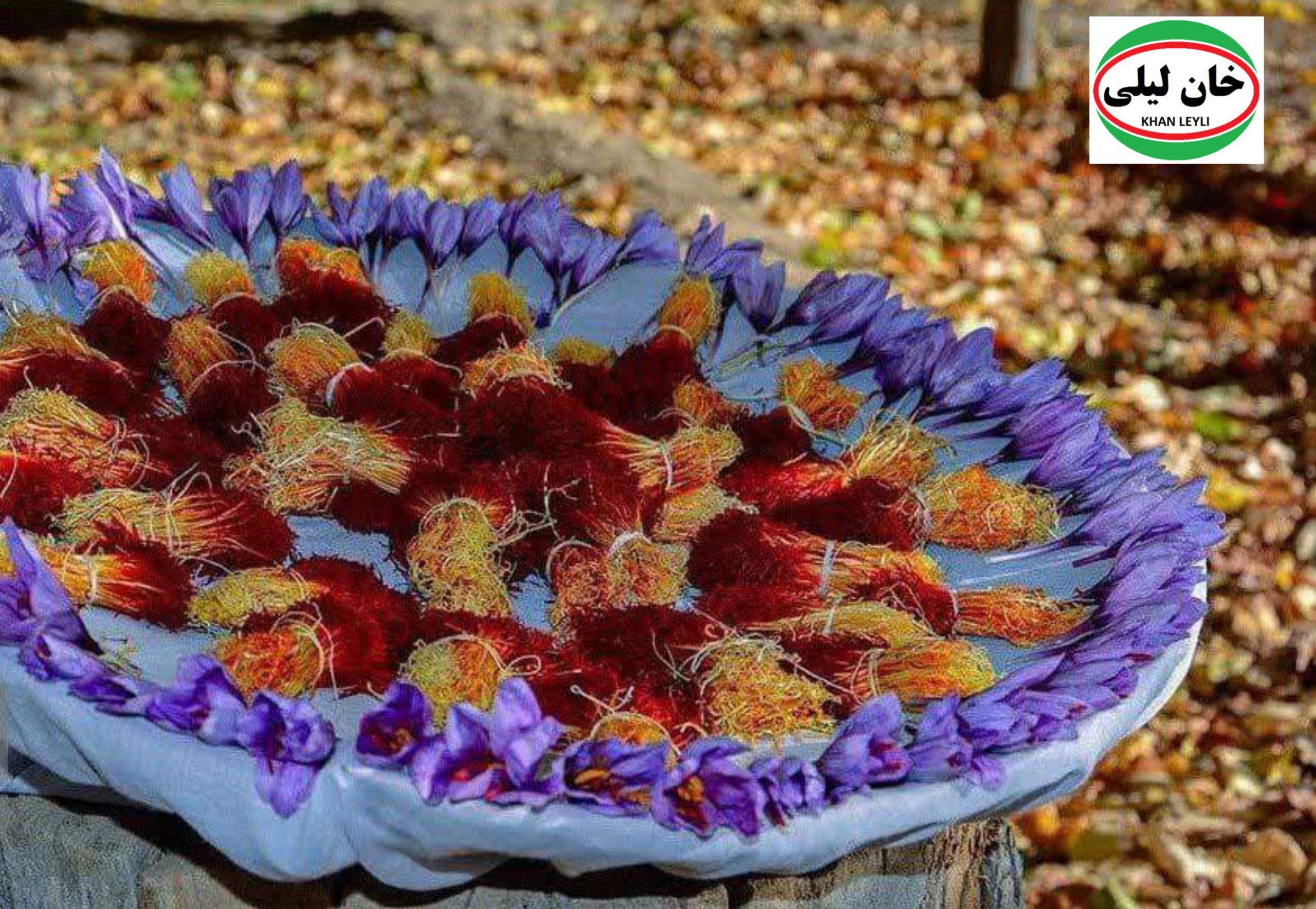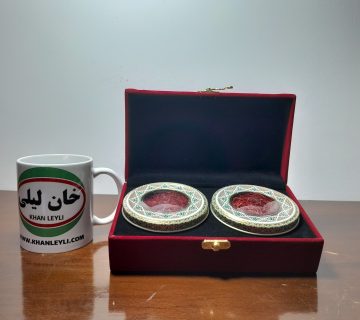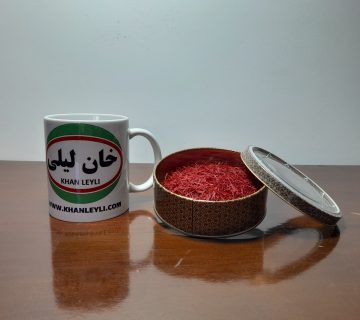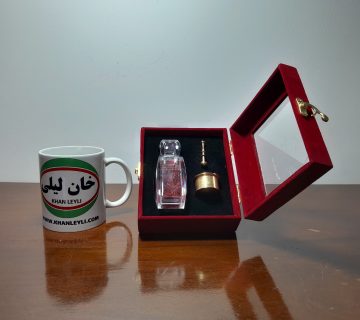Saffron, often referred to as the “red gold,” has captivated the senses and taste buds for centuries, making it one of the world’s most coveted and bestselling spices. This essay delves into the unique properties that contribute to saffron’s immense popularity, examining the factors that make it stand out among other spices and exploring the journey of this precious spice from field to plate.
- Culinary Excellence:
One of the primary reasons for saffron’s bestseller status is its unparalleled ability to enhance the flavor and aroma of dishes. Saffron adds a distinctive and complex taste, imbuing a subtle yet rich earthiness to a variety of cuisines. From traditional Indian biryanis to Spanish paellas, saffron’s versatility in the kitchen has made it a staple in the culinary world.
- Vibrant Color Profile:
Saffron is renowned for its deep, vibrant red hue that it imparts to dishes. The unique chemical compounds, including crocin and crocetin, are responsible for the spice’s intense color. This characteristic not only enhances the visual appeal of dishes but also signifies the authenticity and quality of saffron, contributing to its bestseller status.
- Medicinal Properties:
Beyond its culinary uses, saffron has been treasured for its medicinal properties for centuries. Rich in antioxidants and known for its anti-inflammatory effects, saffron has been associated with various health benefits. From promoting heart health to easing mood disorders, the medicinal properties of saffron add another layer to its desirability, attracting health-conscious consumers.
- Labor-Intensive Cultivation:
Saffron’s scarcity and labor-intensive cultivation process contribute significantly to its bestseller status. The spice is derived from the stigma of the Crocus sativus flower, and each blossom produces only three red stigmas. Harvesting saffron is a delicate and time-consuming task that requires manual labor, making it a precious commodity with a limited annual yield.
- Geographical Influence:
The geographical origin of saffron plays a crucial role in its properties and overall appeal. Saffron cultivation is concentrated in specific regions with the ideal climate and soil conditions, such as Iran, India, and Spain. Each region imparts unique flavor nuances and aroma to the saffron, creating distinct varieties that cater to different culinary preferences.
In conclusion, the bestselling status of saffron is not a result of one singular property but rather a harmonious blend of culinary excellence, vibrant color, medicinal benefits, labor-intensive cultivation, and geographical influence. As consumers continue to seek premium and unique culinary experiences, saffron’s properties ensure its enduring popularity as the “harvested gold” that elevates dishes to new heights.
Golden Threads: Unveiling the Secrets Behind Bestselling Saffron
Saffron, often referred to as the “golden threads,” stands out as one of the most sought-after and bestselling spices in the world. This essay aims to unravel the secrets behind saffron’s allure, exploring the unique qualities that contribute to its golden status in culinary and cultural realms. From its rich history to its vibrant color, saffron weaves a tale of intrigue and excellence that transcends its culinary applications.
- Historical Riches:
Saffron’s journey as a culinary treasure dates back centuries, where it was revered by ancient civilizations for its medicinal and culinary properties. The spice’s historical significance adds a layer of mystique and tradition, making it more than just a culinary ingredient. The golden threads of saffron carry the weight of centuries of cultural and culinary heritage.
- The Essence of Flavor:
At the heart of saffron’s bestselling allure is its ability to infuse dishes with a unique and sophisticated flavor profile. The spice’s distinct taste, a result of compounds like picrocrocin and safranal, adds a subtle yet profound depth to dishes, making it an essential ingredient in cuisines around the world. The golden threads of saffron, when carefully woven into a dish, create a symphony of flavors that elevate it to culinary excellence.
- A Symphony of Color:
Saffron’s golden hue is not just visually stunning; it signifies authenticity and quality. The compounds crocin and crocetin contribute to the spice’s vibrant color, turning dishes into works of art. The golden threads of saffron bring an aesthetic appeal to culinary creations, making it a visual delight that adds elegance to any dish.
Saffron’s secrets lie not only in its chemical composition but also in the meticulous craftsmanship of its cultivation. The delicate Crocus sativus flowers must be carefully tended to and hand-harvested, ensuring that the golden threads are preserved with utmost care. This labor-intensive process, combined with the spice’s limited geographical cultivation, contributes to its exclusivity and bestselling allure.
The widespread reverence for saffron across diverse cultures and cuisines adds to its mystique. Whether it’s the Persian saffron, Spanish coupe, or Kashmiri variety, each region’s saffron has its unique characteristics, reflecting the essence of the local culture. The global appeal of saffron, represented by its golden threads, signifies a shared appreciation for culinary excellence and cultural richness.
In conclusion, the secrets behind bestselling saffron lie in its historical richness, flavorful essence, vibrant color, cultivation craftsmanship, and global reverence. The golden threads of saffron not only enhance the culinary experience but also weave a story of cultural significance and timeless appeal. As these golden threads continue to be treasured, saffron remains a culinary gem that transcends borders and stands as a symbol of excellence in the world of spices.
Saffron Success: Exploring the Characteristics of Top-Selling Spic
Saffron, the spice known as the “red gold,” has consistently maintained its status as a top-selling spice across the globe. This essay delves into the distinctive characteristics that contribute to the success of saffron in the culinary world, examining its unique properties and exploring the factors that make it a spice of choice for chefs and enthusiasts alike.
One of the primary characteristics that define saffron’s success is its unparalleled flavor profile. The spice adds a touch of elegance to dishes with its subtle yet complex taste. The combination of floral, earthy, and slightly bitter notes creates a flavor that is both distinctive and versatile. Chefs and home cooks alike appreciate saffron for its ability to transform ordinary dishes into culinary masterpieces.
Saffron’s success is also attributed to its captivating aroma, which is released when the threads are steeped or infused. The aromatic compounds, including safranal, contribute to the spice’s enchanting fragrance. The scent of saffron is not only inviting but also plays a crucial role in creating a sensory experience that elevates the overall enjoyment of a dish.
The deep, golden color imparted by saffron is a visual testament to its quality and authenticity. The spice contains natural pigments like crocin, which infuse a rich and vibrant hue into the food it touches. This characteristic not only enhances the visual appeal of dishes but also signifies the presence of genuine, high-quality saffron.
Beyond its culinary appeal, saffron boasts a range of health benefits that contribute to its success. The spice is rich in antioxidants and has been associated with anti-inflammatory properties. From promoting digestive health to potentially improving mood, saffron’s positive impact on well-being adds to its allure, attracting health-conscious consumers.
Saffron’s success is often tied to its geographical origins, with certain regions renowned for producing the highest quality saffron. Whether it’s the Iranian saffron, Spanish coupe, or Kashmiri variety, each region imparts unique characteristics to the spice. The geographical prestige of saffron contributes to its desirability and adds a layer of authenticity that resonates with consumers.
In conclusion, saffron’s success as a top-selling spice is intricately tied to its flavorful elegance, exquisite aroma, intense coloration, health benefits, and geographical prestige. As a culinary gem, saffron continues to captivate taste buds and inspire culinary creativity worldwide. Its unique combination of characteristics makes it not just a spice but a symbol of culinary excellence and sophistication in the ever-evolving world of gastronomy.
Harvesting Gold: A Deep Dive into the Properties of Bestselling Saffron
Saffron, often referred to as the “red gold,” holds a distinguished place as one of the world’s bestselling spices. This essay aims to embark on a journey of exploration into the properties that make saffron a culinary treasure, uncovering the secrets behind its coveted status. From its labor-intensive cultivation to the chemical compounds that paint dishes with a golden hue, saffron’s unique properties contribute to its unparalleled success in the global spice market.
At the core of saffron’s properties lies the intricate and labor-intensive process of cultivation. Saffron is derived from the stigma of the Crocus sativus flower, and each blossom produces only three red stigmas. The delicate nature of the flower requires meticulous hand-harvesting, making saffron cultivation a true artisanal craft. This methodical harvesting process contributes to the spice’s scarcity and elevates it to a level of prestige.
Saffron’s vibrant color and unique flavor are the result of a complex blend of chemical compounds. Crocin, responsible for saffron’s intense color, combines with safranal and picrocrocin to create the spice’s distinct flavor profile. This chemical alchemy not only imparts saffron with its signature characteristics but also ensures that each strand contains a symphony of flavors, making it a sought-after ingredient in various culinary traditions.
In the culinary world, saffron is hailed for its transformative properties. A pinch of saffron threads has the power to turn a dish into a culinary masterpiece. Its subtle yet complex flavor profile adds depth to a range of cuisines, from Indian biryanis to Spanish paellas. Saffron’s ability to enhance the taste of diverse dishes makes it an indispensable ingredient in the kitchen, contributing to its bestselling status.
The golden hue of saffron is not merely a visual spectacle; it signifies the presence of authenticity and quality. The compound crocin is responsible for the spice’s rich coloration, turning ordinary dishes into works of art. Saffron’s golden threads become a symphony of color in the culinary world, symbolizing excellence and adding a touch of luxury to the dining experience.
Saffron’s properties are also influenced by its geographical origins. Different regions, such as Iran, India, and Spain, produce saffron with distinct characteristics, influenced by the local climate and soil conditions. The global prestige associated with saffron from specific regions further enhances its desirability, allowing consumers to explore and appreciate the nuances of different varieties.
In conclusion, the properties of bestselling saffron are intricately woven into the fabric of its cultivation, chemical alchemy, culinary magic, golden symphony, and global prestige. As the red gold continues to be harvested and appreciated worldwide, its properties serve as a testament to the craftsmanship involved and the culinary enchantment it brings to dishes. Saffron remains a symbol of excellence, both in terms of its properties and its enduring appeal in the diverse tapestry of global cuisine.








No comment